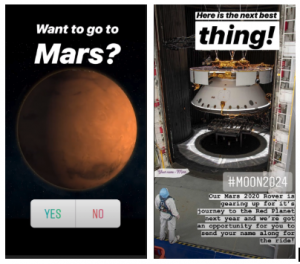 In a world of social media, job boards are beginning to look antisocial
In a world of social media, job boards are beginning to look antisocial
To say that social media has revolutionized the talent acquisition process seems almost passé these days. The reality, according to Jobvite’s 2014 survey, is that social recruiting has established itself as the norm — the accepted standard among 93 percent of recruiters polled for the report. The labor market has become ferociously competitive with the increase of job openings and demand for highly skilled workers, especially those with demonstrated strengths in science, engineering, math and technology. And 69 percent of recruiters expect the competition to grow in 2015. To succeed, staffing professionals plan to invest more in social recruiting tools (73 percent), referrals (63 percent) and mobile applications (51 percent). Even the concept of employee referrals has received a modern makeover. Recruiters no longer collect testimonials from letters, emails or phone calls — savvy talent acquisition specialists are culling them from connections listed in social profiles.
This transformation isn’t just capitalizing on the latest fads, Millennial courting tactics or candidate engagement efficiencies — social media produce results well beyond traditional job boards. Writing for Careerealism, Michelle Riklan boldly referred to sites such as Craigslist, Monster, Indeed, CareerBuilder and other job network juggernauts as “black holes.” Why? Because the odds of a candidate hearing anything back are incredibly slim. Most boards receive 120 applications in a single week. By the time a vacancy’s been filled, the hiring company has accumulated, on average, 250 applications. “Based on those numbers,” Riklan noted, “your chance of getting the job is a measly 0.4%. That’s not a typo.”
Even worse, she continued, “Company recruitment portals are often outdated, so the vacancies posted are either already filled or non-existent.” Beyond that, the systems’ algorithms and pre-screening questions actually prevent an applicant’s human voice, aspirations and qualifications from shining through. Social networking, on the other hand, allows candidates to stand out — to tell interesting stories and present narratives that speak to their goals, motivations and ideal business cultures. It’s all the rage right now, yet history also reveals that the talent acquisition function can be notoriously slow to adopt new and emerging technologies.
Social media pioneers such as Twitter, Facebook and LinkedIn are starting to show their wrinkles. It doesn’t mean they’re collapsing into black holes like job boards seem to be, however other stars are beginning to appear in their skies. On February 5, for example, we wrote about eHarmony’s somewhat stunning foray into the world of recruiting. Here are some of the other social recruiting tools to look for or revisit this year.
Match-Click
This startup wants to go head-to-head with LinkedIn. Its market position is simple: “The labor force has changed. Today’s candidates expect personal and authentic content on a mobile device. To hire the best candidates, you need to provide them with information that is useful, interesting – and easy to access.” And that’s where Match-Click comes in.
Maury Hanigan, Match-Click’s entrepreneurial founder, boasts a long career as a recruitment strategy consultant who also spent two decades running a talent management firm. In December 2013, recognizing the lack of a platform capable of delivering what employers needed and candidates wanted, she designed the model for Match-Click.
As described by Laura Entis in Entrepreneur magazine, “Hanigan’s startup is a mobile and video-friendly recruiting platform. Each job posting includes three short videos, one from the position’s hiring manager, along with two spots from colleagues who are able to briefly outline, in tangible and relatable terms, the top reasons to apply. There’s also a more traditional job description (because ‘legal departments aren’t going away’) but the posting is tailor-made to be shareable and engaging.”
Match-Click aims to overcome the obstacles facing recruiters who are trying to engage passive candidates. According to Hanigan, when employers try to poach star performers from competing companies, only five percent of those candidates respond. Match-Click’s simple yet comprehensive platform claims to solve these challenges, with viral videos (at least within the talent community) pulsing at the core of the solution.
The inclusion of video provides more than compelling storytelling — video offers candidates a realistic sense of a prospective employer’s working culture: formal vs. informal, orderly vs. chaotic, diverse vs. homogenous, innovative vs. traditional, and so on. Match-Click remains in startup mode and currently focuses on employer job postings. The ultimate vision is for Match-Click to expand into a candidate search portal catering to entry- and mid-level professional positions, with salary ranges between $ 75,000 and $ 150,000.
Despite its newness and startup status, Match-Click is already being used by Ernst & Young, L’Oreal, Cisco, Citrix and a host of smaller businesses. Hanigan is continuing to raise capital for the venture, and has bested stiff competition in three high-profile pitch contests. And with the power of some impressive Fortune 500 clients behind her, Hanigan may indeed surpass social recruiting platforms like LinkedIn in the near future. So keep an eye out and explore the service.
Buffer
Match-Click isn’t going to be the only new social recruiting platform in the coming months. Video interviewing solutions, such as WePow, are also making transitions to social media. In fact, WePow integrates with social networking sites as well as applicant tracking systems (ATS). Its clients, companies such as Fox and RMS, say the collaborative application has proven particularly effective in capturing the interests of Millennials. Although WePow deserves some attention for evolving beyond a video interviewing service and into a video recruiting solution, the point it illustrates is how the nature of social media is changing and expanding — recruiters are going to have more social networks to maintain, which could eventually impose new burdens on their time and productivity. That’s why Buffer is an app worth checking out sooner rather than later.
Buffer, while not a social network itself, is a powerful tool for organizing and managing social media. Buffer automates posting across all of your accounts instantly, including Twitter, Facebook, LinkedIn and others. The app also allows users to select specific accounts for their posts. There may be times when you want to exclude a particular social network, and Buffer accommodates that. Even more powerful, the tool facilitates the scheduling of your updates. Savvy recruiters can predetermine when to publish certain posts throughout the day, capitalizing on data that reveal when readership statistically reaches daily high points.
And the single sign-on capabilities of Buffer are huge time savers. Users no longer need to control their social networks individually — one logon permits universal access to every site that’s been synced in the application.
Google +
Google Plus isn’t new — it’s been around since 2011 — however it’s underutilized and full of untapped potential. A lot of buzz in tech circles would suggest that Plus may be the next victim of Google’s infamous Spring Cleaning, yet insiders say the opposite is true: Google is actively working on ways to reinvent and reinvigorate the network. In fact, the company is purchasing new technologies such as Odysee to bolster the platform. It’s also introduced enhanced features like pinning and the “Mentions” tab.
Though Google Plus may not boast as many members as Facebook or LinkedIn, the social network remains prominent and attracts a tech-savvy crowd. It’s also more conducive to building communities, sharing information and interacting. Google Hangouts, for example, is one of the most robust video and chat platforms on the market. And influencers use it. Most recently, the Pope and cast members from AMC’s “The Walking Dead” hosted live, public Hangouts. Here are some other top benefits.
- The average Google Plus user is technically proficient and interested in connecting with communities beyond friends and relatives. Members are more likely to join professional groups, industry pages and communities built around niche interests or skills. In reviewing a user’s profile, recruiters gain substantial insight to a candidate’s interests, capabilities, networks and work experience. This additional information helps round out the gaps in resumes published on sites such as LinkedIn.
- Google Plus focuses on a user’s personality. Facebook is preoccupied with image sharing: selfies, kitten videos and humorous memes. Twitter, apart from its strict character limitations, tends to be a one-sided soapbox for random thoughts or a headline generator.
- Google Plus was built to facilitate communication and interaction. You can have conversations on Google Plus that are more difficult to engage in with other social media. A user has the ability to send emails directly to other Google Plus members without having their email addresses.
- Hangouts. It’s better than Skype. Not only does it excel at video conferencing, it allows for concurrent text chats, event scheduling for interviews, public or private interactions, multiple participants, document sharing, screen hosting and more.
- Google Plus’ “Circles” feature offers an efficient and more configurable means to organize and manage your groups. You can create any number of circles by topic, industry, interest, category or whatever your needs. So a recruiter could design a circle for Tech Candidates or Sales Candidates and then add users to those groups. The system allows recruiters to publish public posts or restrict them to specific circles. And when a candidate’s circles are visible, recruiters can explore that candidate’s broader professional network.
- Of course, we should also mention SEO. By posting on Google Plus, your profile immediately garners more attention from Google Search, increasing your odds of building a larger audience and pushing your content higher in rankings and search results.
Social recruiting will only increase in prominence and importance for the recruiting community. And new social networking tools will inevitably appear. Each serves a different purpose, appeals to different users, reaches different audiences and encourages different dialogs. Staying abreast of the trends and resources available will be essential strategies for staffing professionals.
(407)
Report Post








